Mungbeans |
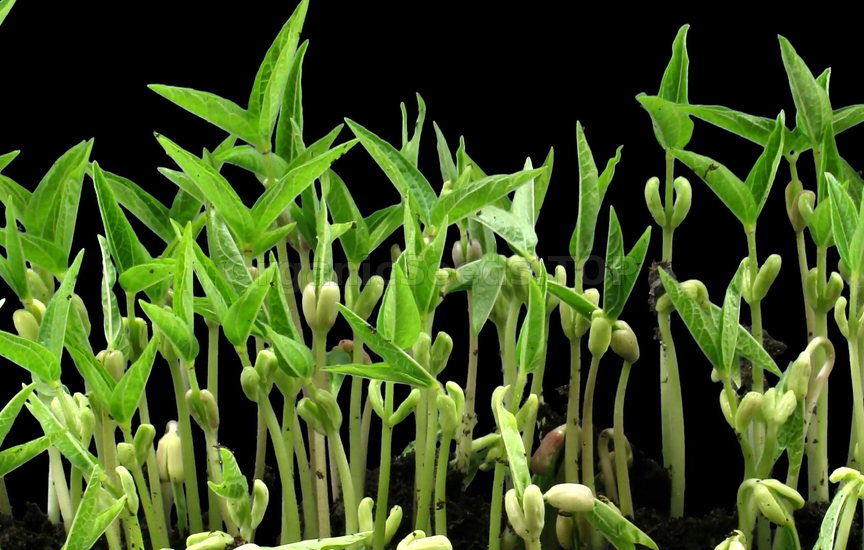 Mungbean is at the same time one of the most familiar beans in the U.S., and one of the least known. It is familiar to many because of its use for bean sprouts in salad bars across the country. Yet few have seen the crop growing or know where it is produced. This warm season legume is a native of India and is still grown on a large acreage there. Often called green gram or golden gram in international publications, it is also cultivated in several countries of Asia, Africa, and South America. In the U.S., most mungbeans are grown in Oklahoma. U.S. production is estimated at around 100,000 acres. The majority of this acreage is harvested for a variety of food products, but some mungbean fields are plowed under as a green manure crop. Several million pounds of mungbeans are consumed each year in the U.S., with almost three fourths of that being imported. Production GuidePlant Description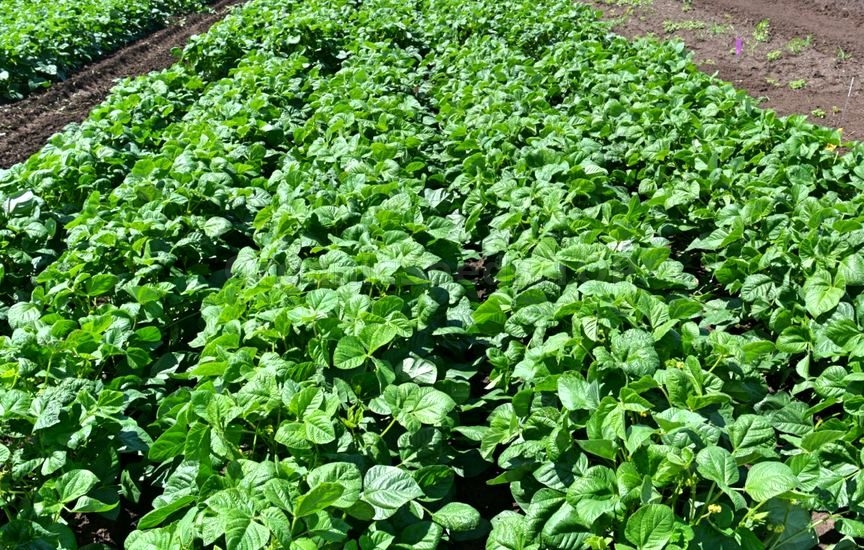 While there are several cool season legumes grown as field crops in the U.S. (such as chickpeas, lentils, lupines, and faba beans), there are relatively few alternative legumes that are heat and drought tolerant. The two legume grains (pulses) grown in the U.S. that fit into this category are both members of the same genus (Vigna) – mungbeans and cowpeas. Mungbean [Vigna radiata (L.) Wilczek] seeds range from green to brown (some tropical varieties are yellow), and are about half the diameter of a soybean seed.
Mungbean plants look more like a garden bean than a soybean plant, being about 24 to 30 inches tall, and having a moderate number or branches with smaller leaves than soybeans. Pods are 3 to 4 inches long, each having 10 to 15 seeds. There are several pods clustered at a leaf axil, with typically 30 to 40 pods per plant. The pods turn darker in color as they mature. 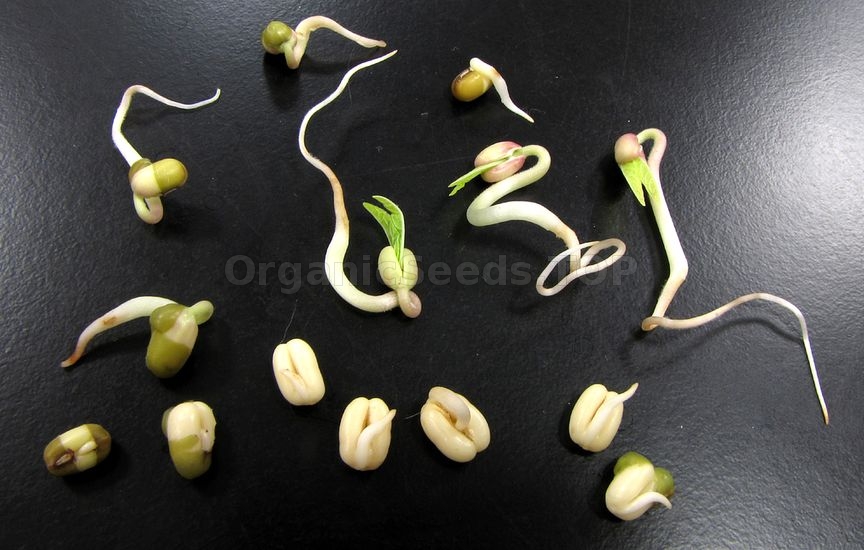 Planted in early June, the crop will begin to flower in 50 to 60 days, and then continue flowering for a few weeks. The crop is usually ready to be harvested in early to mid-September. Leaves will dry down but may not drop off completely. Mungbean is fairly well adapted to sandy loam soils and dry conditions, which gives it a competitive advantage in places like Oklahoma. In Missouri, its most competitive niche is on droughty soils. It has good potential for double cropping after wheat or canola in the southern part of the state. Utilization Mungbean is used in several food products, both as a whole seed and in processed form. Whole seeds are sold for use in soup mixes or to produce bean sprouts for salads. Processed mungbeans are used for soup bases or sometimes for bean flour. Like most legumes, mungbeans are relatively high in protein, around 25% of the seed by weight. The amino acid profile of mungbeans, similar to other beans, is complementary to cereal grains.
Since mungbeans are a relatively high priced seed (about twice the cost of soybeans), it is not cost effective to feed good quality seed to livestock. However, splits, cracked seed, and other material left after cleaning mungbeans are often fed to cattle, substituting for part of the soybean ration. Oklahoma State University has determined that it takes 1.5 pounds of mungbean to replace 1.0 pound of soybean meal in cattle rations. Mungbean has been successfully fed to hogs in research trials, but more research is needed in this area. Mungbean plants have occasionally been used for beef cattle forage. Markets and Economics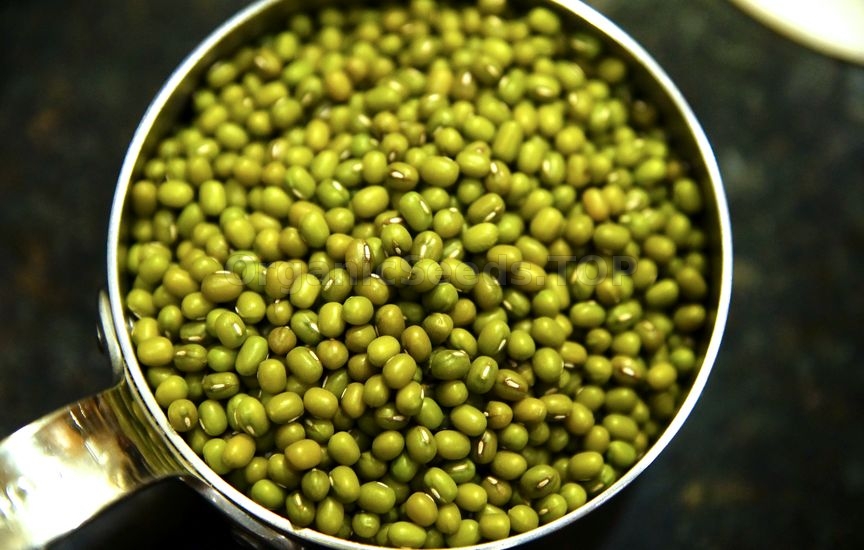 With alternative crops such as mungbeans, it is generally preferable to have a contract for growing the crop before planting. However, since the mungbean market is fairly well established in Oklahoma, it may be possible to sell the crop successfully without having a production contract. Growers are advised to identify their markets as early as possible, rather than waiting until after harvest. Most delivery points for mungbeans are in Oklahoma, but it may be possible to direct market mungbeans to a food broker or to a retailer in Missouri.
Price for mungbean fluctuates due to normal production and demand factors, but averages around $0.20 per pound. This price is about double the price of soybeans, but is offset by the lower yields that are obtained by mungbeans. Typical yields of mungbeans in central Missouri have been 1000 pounds per acre, with good yields of 1200 pounds per acre or slightly higher. With a modest investment in plant breeding, mungbean yields could probably be substantially improved, but available varieties are quite dated. 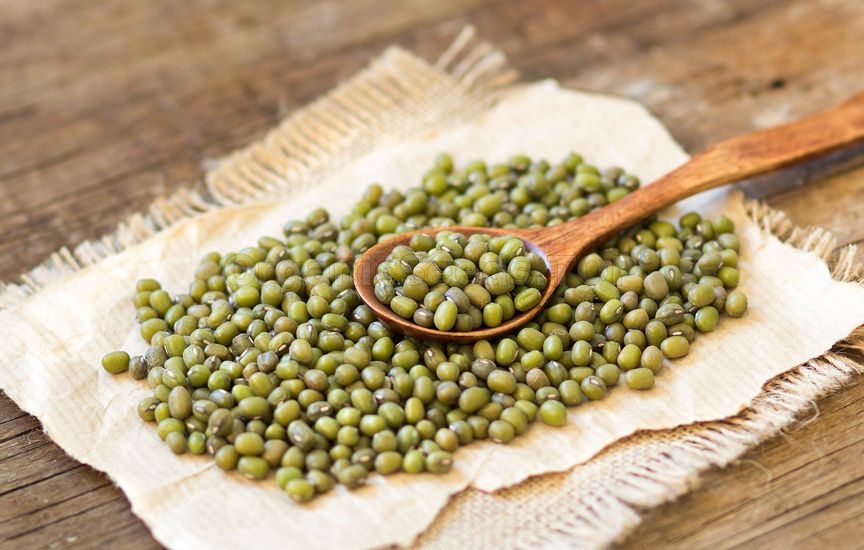 (Berken, the main variety grown, was released by Oklahoma State University in 1962!) Although mungbean yields benefit from good soils, the competitive advantage for mungbeans versus soybeans is probably on sandy loam soils or in other moisture-limited situations. When soybean prices are low, mungbeans become more competitive – the price of mungbean, as a food crop, is unaffected by the price of soybean, which is driven primarily by the demand for livestock feed. Production costs for mungbeans are very similar to soybeans, with the one difference being post-harvest cleaning and/or transportation. If mungbeans have to be hauled to Oklahoma for sale, profits will naturally diminish. If several Missouri farmers worked together on a common delivery point for mungbeans, transportation costs could be reduced (assuming rail could be used instead of truck for delivery). If mungbean is planted as a double crop with no added fertilizer, production costs are fairly minimal. Overall, mungbeans can be looked at as another crop to diversify the crop base on a farm. Although their profit is not dramatically different from soybeans, their drought tolerance, and the fact they are a food crop rather than a feed crop, can help buffer a farmer’s economic risk from variability in weather or commodity crop prices. How to Grow Mungbeans Growing mungbeans is fairly straightforward, with management practices being similar to soybeans. Mungbeans are frequently double cropped after wheat in Oklahoma, and this practice could be used in southern Missouri. However, mungbeans may not always mature satisfactorily if double cropped (planted July 1 or later) in central or north Missouri. Mungbeans are not tolerant of wet, poorly drained soils.
Planting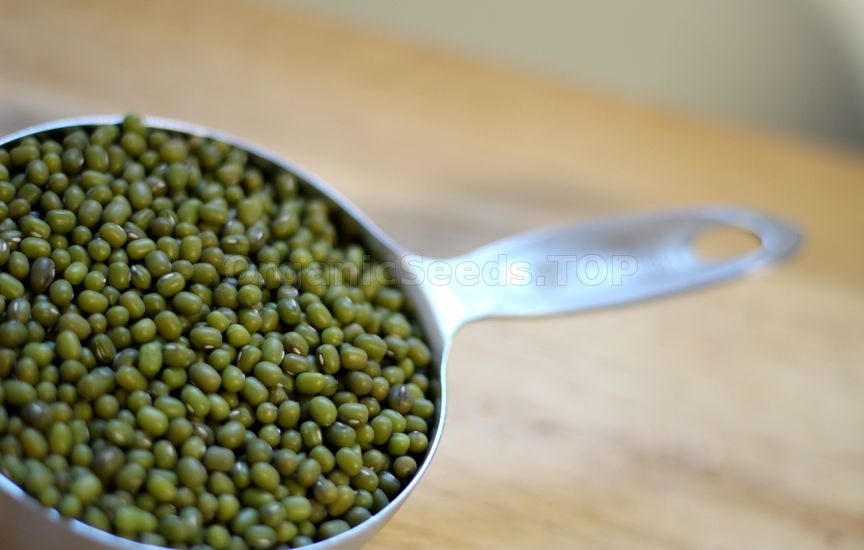 Mungbeans should ideally be planted in early June in Missouri, although planting dates from the latter part of May through mid-June are appropriate. A seeding rate of 15 pounds per acre is recommended for wide rows, and up to 20 pounds per acre should be planted if narrow rows are used. Plant populations in wide rows should be similar to soybeans, about 4 to 8 plants per foot of row. Field trials in Missouri have been done with 30 inch row spacings to allow row crop cultivation for weed control.
 Mungbeans do not fill in 30 inch rows very well, so it is logical to assume that narrower row spacings would give higher yields, provided weed control is adequate. In Oklahoma, double cropped mungbeans are usually planted on about 15 inch row spacings. They could also be planted in narrow row spacings. The seed should be planted somewhat shallower than soybeans, not more than an inch deep in most soils; depth could be up to 1 1/2 inches in sandy soils. Fertility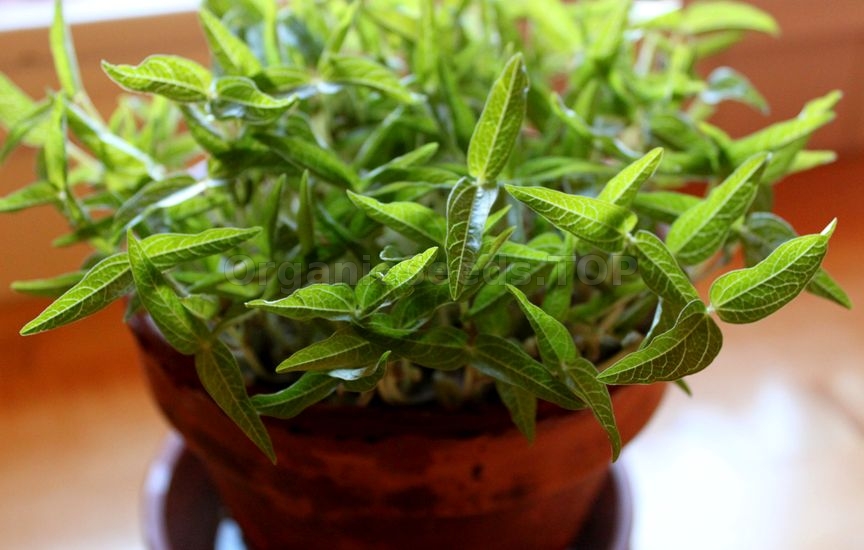 As a legume that fixes its own nitrogen, mungbeans do not need nitrogen fertilizer. However, seed should be innoculated with the appropriate Rhizobium species. Potassium and phosphorous needs have not been studied for mungbean in Missouri. Using the amounts recommended from soil tests for soybeans would be appropriate. Soil pH should be close to neutral. In Oklahoma, when mungbean is double cropped after wheat, no extra fertilizer is usually applied after wheat harvest.
Insects and Diseases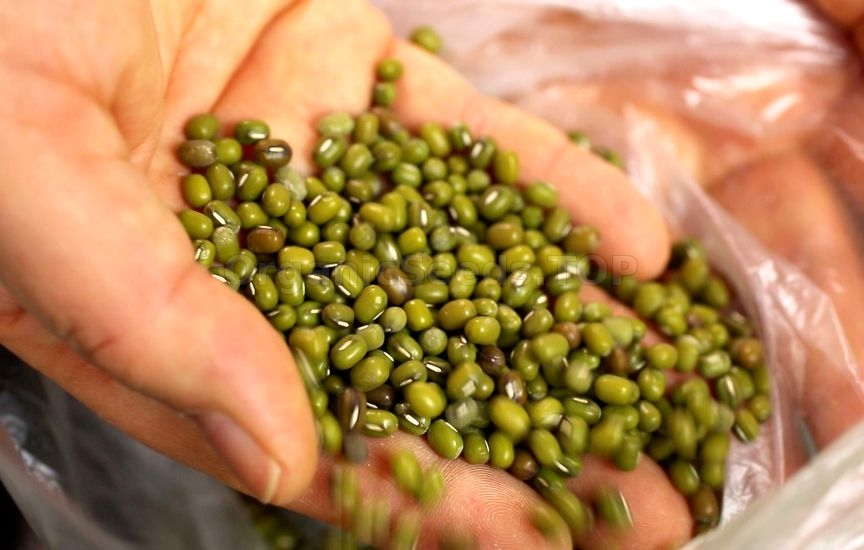 Insects and diseases have not been serious problems in previous Missouri field trials. A number of insects will chew on mungbean leaves, but are unlikely to cause any yield loss. Diseases are most likely to cause a mungbean yield loss in wet conditions. Pesticide reference books do not list any synthetic insecticides or fungicides as being labeled for mungbeans, but certain organic materials, such as pyrethrins, can be used.
Harvest and Storage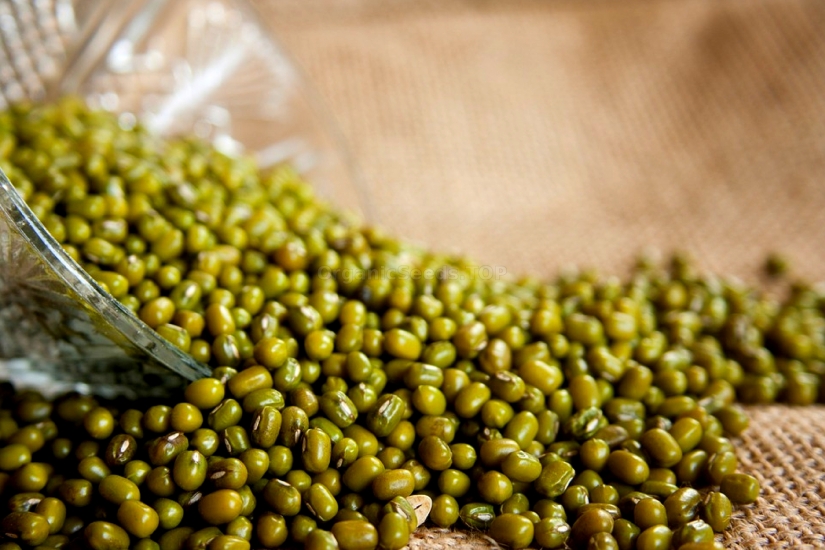 For the whole seed market, quality of the seed is important, so care in harvest and post-harvest handling may be important to avoid cracked or split seed. Mungbeans can be direct combined using a platform head or a row crop head. Adjustments to combine settings, and possibly screen/sieve sizes, should be made for the smaller size of mungbeans versus soybeans. 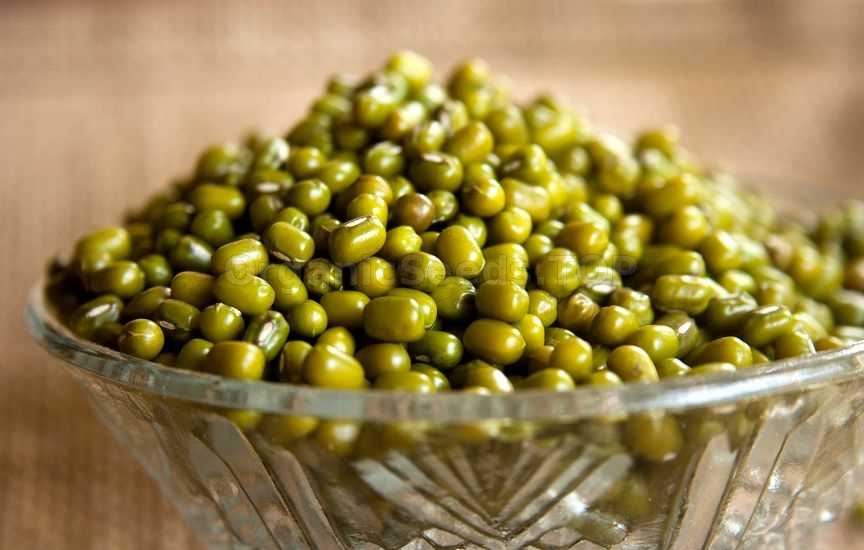 The grain should be stored at around 12% moisture or less. Some buyers will want the seed cleaned and bagged, while others will take the grain in bulk form and clean it themselves. Buyers who are purchasing mungbean for bean sprouts may want to test germination percentage before agreeing to a purchase. You may need:Organic Mungbean Seeds (Vigna Radiata) |
|
|
